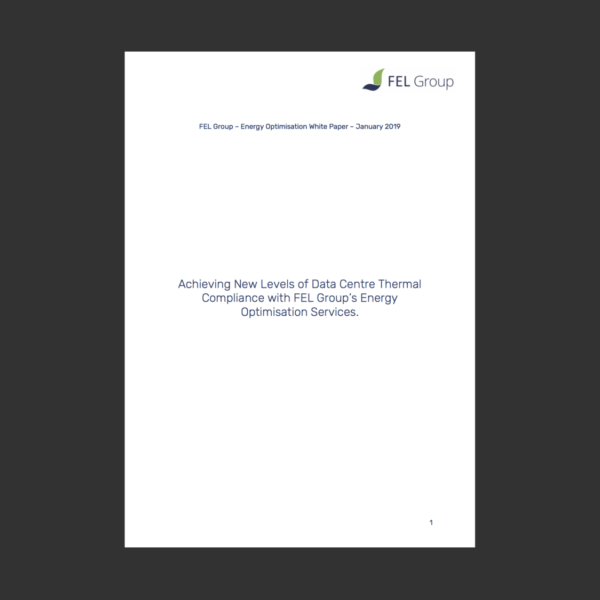
Energy Optimisation White Paper
Introduction
Today’s data centre teams spend far too much time trying to establish exactly the right cooling, power and space strategies for their operations. Yet, despite this, we’re still spending far too much on data centre cooling, consuming too much energy and under-utilising our capacity.
FEL Group’s Energy Optimisation services help you to resolve this challenge, providing you with the real-time visibility of your critical heartbeat operational data that you need to effectively monitor, manage and maximise your data centre’s thermal and power performance. However, to achieve exactly this kind of true thermal optimisation requires a proven, safe process that draws on thousands of real-time sensors and expert spatial models to remove the uncertainty from data centre cooling.
Adopting this approach has already helped one of the UK’s leading media & telecommunications service providers to secure a 26% reduction in its overall data centre cooling energy usage – resulting in a significant £0.8m energy saving in just the first year of the FEL Group project.
Test us out – find out how FEL Group’s Energy Performance Optimisation service can help your business:
Find out how your organisation can achieve the same kind of benefits by taking advantage of our initial FREE FEL Group thermal optimisation and assessment. You’ll benefit from our expert thermal and power analysis, gaining key insights including:
- A precise understanding of your data centre’s current thermal risk profile and ASHRAE compliant status
- Identify potential data centre cooling energy improvements available through thermal optimisation
- Highlight opportunities for further optimisation achieved by unlocking future IT capacity without the requirement for additional cooling
To book your free thermal optimisation audit, contact FEL Group at info@felgroup.co.uk.
Addressing today’s critical data centre cooling challenges:
Despite best efforts, even today’s leading data centres still have cooling and thermal management issues. Recent UK research suggests that cooling is still the second largest consumer of energy in the data centre - currently representing around 30% of overall data centre operating costs.
What’s clear is that organisations are also spending far more than they need to on expensive data centre cooling hardware. To improve thermal performance, they’re adding more and more cooling equipment, however overall cooling utilisation across data centres still only averages 34% across the sector.
At the same time, and regardless of this cooling investment, thermal issues now account for around a third of data centre outages. Similarly, most organisations aren’t aware that – at any given time – potentially up to 15% of their data centre racks aren’t actually compliant with ASHRAE thermal guidelines.
Key factors that need to be addressed:
- Risk Reduction – Thermal issues are still the second largest cause of data centre loss of service, so there’s no room for complacency
- Cooling Cost Management - Cooling is a major consumer of data centre energy, however rooms that have been thermally optimised can potentially save an average of 23% on energy costs
- Unlocking extra data centre capacity – Most data centres don’t track their current cooling utilisation, so it’s difficult to increase capacity without adding more cooling systems. Effective thermal optimisation helps you regain control of the process
1. Requirement for a more structured approach to data centre thermal optimisation
Given that too much data centre operator and facilities management time is already taken up by tracking thermal performance and ensuring that the right cooling, power and space strategies are in place, it’s clear that organisations need a much more structured approach if they are to successfully monitor, manage and maximise their data centre performance.
Unfortunately too many data centres still rely on generalist Data Centre Infrastructure Management (DCIM) tools or expensive consultancy expertise to manage their cooling activities. However, today’s data centre operators are serious about optimising their data centre performance and are looking
for the resolution of potential thermal issues rather than often vague consultancy recommendations.
That’s particularly the case with over-complex DCIM or consultancy-led CFD approaches. They promise much but are often unrealistically expensive and don’t deliver the operational performance that data centre operators and facilities management teams need for a sustained and reliable thermal performance across data centre rooms.
The reality is that approaches such as DCIM aren’t enough to give organisations the levels of ongoing thermal protection they demand. For example, simply tracking return air to a CRAC isn’t going to solve potential thermal problems. Similarly, DC managers can’t rely on DCIM or CFD to establish if their CRACs might be working against other, or whether they’ve got CRACs that are out of alignment. Perhaps most importantly, basic DCIM tools can’t go on to establish the impact that these kind of scenarios either are having or might have on the critical business services that are supported by their organisation’s data centres.
Similarly, with CFD there’s no dynamic simulation capabilities, and no way to automate the impact of thermal changes across potentially hundreds of racks, multiple cooling systems and warm data centres.
2. Achieving entirely new levels of thermal control cooling and power efficiency
What today’s data centres require is a much more accessible, data-led approach to thermal optimisation. One that delivers the level of real-time temperature, cooling and power reporting that data centre operators require, but without the expense of uncertainty of complex infrastructure tools or consultancy support.
For this kind of true cooling and power optimisation it’s necessary to monitor and report on thermal and cooling data in a much more granular way, ideally right down to the individual rack-level. It’s only when data rooms are carefully mapped with all the appropriate cooling and power data fields that 100% thermal compliance is possible. With this kind of solid data foundation in place, there’s a real opportunity for data centre teams to go beyond this and add further value to the business with services built around true real-time ‘What If?’ simulation support and full M&E capacity planning.
To achieve this level of data centre thermal optimisation, however, requires a proven and safe thermal optimisation approach that will ensure that your data centres have precisely the right cooling, power and space strategies in place. That’s where FEL Group and its portfolio of thermal optimisation services can help.
- FEL Group – your best practice data centre thermal optimisation partner
With over 20 years’ operational expertise in delivering and supporting mission critical infrastructure for many of the UK’s leading data centre operators, FEL Group is ideally placed to support your data centre performance optimisation requirements.
Our 70-strong team is focused on providing the best service levels possible. With our in-depth knowledge of critical power, cooling solutions, infrastructure and power monitoring capabilities FEL Group is able to support all aspects of data centre performance optimisation, with a particular focus on optimisation and capacity expansion across live environments.
Delivering an optimum environment that supports all your data centre’s critical IT and cooling infrastructure equipment, demands a deep and practical understanding of the multiple thermal factors that can impact overall data centre performance. In understanding these variables, our optimisation specialists not only consider the heat that’s generated, but also how it’s dispersed, the way that air flows around equipment and across data centre rooms, and also other key issues such as outside temperatures.
That’s why FEL Group continues to invest in its Energy Performance Optimisation capabilities and develop its own internal optimisation expertise. The Group has built particularly strong links with local training colleges near to its Scunthorpe, Lincolnshire HQ, recruiting and developing engineers to support the largest customer optimisation challenges. FEL Group’s Senior Optimisation Engineer Nigel Barber, for example, joined the company this way 20 years ago and is now instrumental in shaping FEL’s distinctive approach to data centre thermal optimisation.
- Robust Optimisation delivery model backed by impartial recommendations
The fact that FEL Group has access to a much broader total building skillset for critical facilities means that its data centre design and energy optimisation services support both data centre IT and M&E requirements. FEL Group’s Robust Model draws on a broad range of energy reduction approaches while always remaining within the confines of a client’s specific Design and Build standards.
The Group’s Energy Optimisation model is applied across five key services:
- Benchmarking
- Improvement Scoping
- Project and Programme Management
- Project Delivery
- Improvement Reporting
The process begins with a comprehensive facility survey, identifying the key rooms that can benefit from optimisation. FEL Group consultants then apply a logistical view against the potential impact of implementation to critical infrastructure. All optimisation initiatives need to meet stringent risk assessments and are focused on maximising the balance between minimum spend and maximum return.
In developing its optimisation proposition, FEL Group also made sure to adopt a vendor-agnostic stance so that the team could always remain truly impartial when recommending specific cooling equipment or advice. This independent approach ensures that cooling equipment and capacity upgrades only considered where existing systems have reached end of life or are beyond economic repair. This, coupled with best practice supplier relationships ensures an optimum environment for your critical infrastructure equipment.
5. FEL Group Energy Optimisation services:
Drawing on an expert team of thermal and cooling professionals to support your data centre thermal optimisation needs, FEL Group’s Energy Optimisation team is able to help organisations achieve entirely new levels of data centre thermal compliance and cooling energy efficiency.
Taking advantage of the latest sensors and 3D real-time thermal visualisation software, the FEL Group team is ready to help you remove thermal risk and unlock data centre cooling energy savings. Its distinctive structured 3-stage suite of optimisation services include:
- Benchmarking – using specialist measurement techniques and 3D mapping tools to measure your data centre environment and quickly identify areas of cooling inefficiency and thermal
- Optimisation – monitoring and analysing airflow performance in the data centre from the AHUs to the grilles, actively re-balancing the floor to maximise performance and reduce hot and cold spots
- Ongoing Thermal Management - with regular follow-up tuning visits and resilience testing to ensure ongoing cooling performance and help fine-tune rooms in response to inevitable data centre evolution
Rather than just making recommendations, FEL Group’s Energy Optimisation approach is committed to delivering the thermally optimised performance your data centre operations require. Analysis from successful optimisation projects shows that effective data centre thermal optimisation delivers benefits in three key areas:
- Removing risk from unplanned outages – ensuring adherence with ASHRAE thermal guidelines by identifying and resolving potential thermal risks
- Self-funding energy optimisation – effective thermal optimisation typically results in savings of between 20 and 40% on data centre cooling costs,
- Releasing cooling capacity – with our thermal optimisation services you can release significant cooling capacity, allowing the installation of further IT equipment without additional cooling costs
Unlike traditional data centre optimisation approaches, FEL Group and it’s team of thermal and cooling professionals underpins its Energy Optimisation services with Internet of Things sensors and the latest SaaS visualisation and monitoring software to created ‘fully-sensed’ data centres that open up new levels of thermal compliance and cooling energy cost reduction.
In addition to 100% rack-level ASHRAE thermal standards adherence and cooling energy savings, access to FEL Group’s broader total building skillset ensures that critical facilities optimisation can range across both data centre IT and M&E requirements. equipment.
6. FEL Group Energy Performance Optimisation in action:
Working with one of the UK’s leading media & telecommunications service providers, FEL Group’s Energy Optimisation team has drawn on an extensive portfolio of energy reduction measures to generate significant cooling energy savings for the client.
At all times, optimisation and energy reduction measures were delivered while remaining within the boundaries of the client’s design and build standards.
An initial FEL Group Benchmarking and Improvement Scoping exercise identified that some of the client’s data centre sites were consuming excessive energy when compared against an INENCO/Scottish Power business-wide energy consumption benchmark. FEL Group’s initial survey assessment was extended across some 33 client data centre sites, surveying across the client’s DC estate to identify key rooms that could benefit from cooling energy systems optimisation.
Removing the uncertainty from data centre cooling with thermal surveying
FEL Group’s thermal surveying approach is based on the widescale deployment of smart real-time wireless temperature sensors that, when combined with expert spatial models and monitoring software, help to identify the precise thermal characteristics of each data centre room.
Initial surveys found that while the client’s existing cooling machines were in good condition, overall cooling utilisation across the estate was running at less than 50%. Once thermal surveys were completed, the client tasked FEL Group with reducing its mechanical cooling running times and maximising energy savings.
The FEL Group Energy Optimisation team moved to address this through a comprehensive blend of physical and operational improvements. This optimisation process resulted in direct improvements in three key areas:
Thermal risk removed – through combination of temperature sensors, ‘zone of influence’ analytics and airflow balancing
- Thermal risk removal – through an active combination of temperature sensors, ‘zone of influence’ analytics and airflow balancing
- Energy savings delivered – initial 26% data centre cooling energy saving in year 1 across 33 client sites, securing an average annual kW saving of 815kW equivalent to a £0.8m annualised energy saving.
- Capacity released – the FEL Group process also accurately quantified existing cooling capacity, combining power, cooling and space real-time data to enable rapid capacity planning across the client’s estate
Ongoing continuous optimisation
As part of the project, FEL Group has also deployed power monitoring to cover cooling power, site mains and IT power at a site or room level. For energy savings reporting, meter readings are taken in kWh from the client’s existing infrastructure management system to provide monthly actual performance measurements against cooling benchmark data to deliver energy savings per month.
The FEL Group Energy Optimisation process also incorporates comprehensive reporting at both an estate and individual site level. Monthly reports are produced for site load, cooling power and site IT & DC. Power usage graphs identify actual performance, while benchmark and optimisation reports are available across all sites to ensure ongoing energy optimisation.
Taking things to the next stage with auditable automated cooling controls As part of this innovative project, FEL Group has also worked with its media & telecommunications customer to support further optimisation for its data centre cooling units.
Using industry-standard hardware, FEL Group has deployed some 65 control panels linked to its Energy Optimisation software to effectively automate the control of its cooling units. By applying a standard set of rules based on hard-wired sensors, FEL Group’s auditable secure approach enables cooling units to be turned on and off when they are needed, unlocking a significant reduction in power usage and contributing to the project’s impressive energy savings.
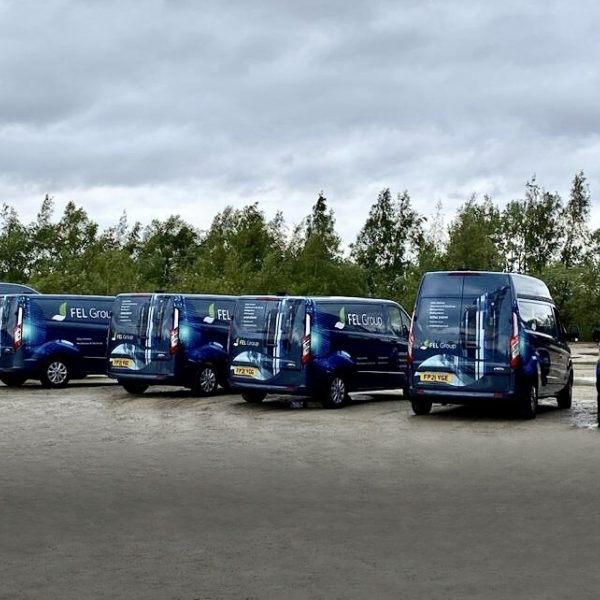
FEL Group Take Delivery of Their Ne...
FEL Group aim to get out on the road with their fleet of brand new liveried vans. FEL Group has revealed their new fleet of vans with brand new designed livery which is sure to get noticed out on the road.
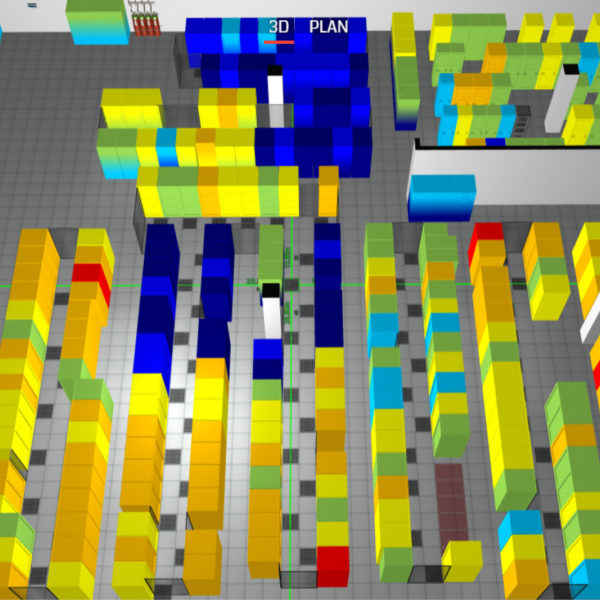
The University Challenge
FEL Group are taking on an ambitious challenge to remove 1 Million tonnes of CO2 from University Data Centres with innovative monitoring & management software.

FEL Group Engineers Learning New S...
FEL Group are proud to support the NHS Emergency Nightingale Hospital in Harrogate
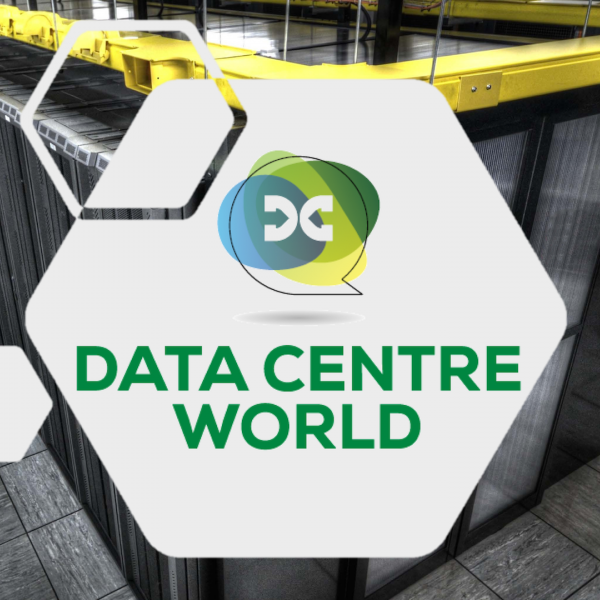
FEL Group at DCW 2020!
FEL Group are returning to Data Centre World 2020, with bigger and better ideas...
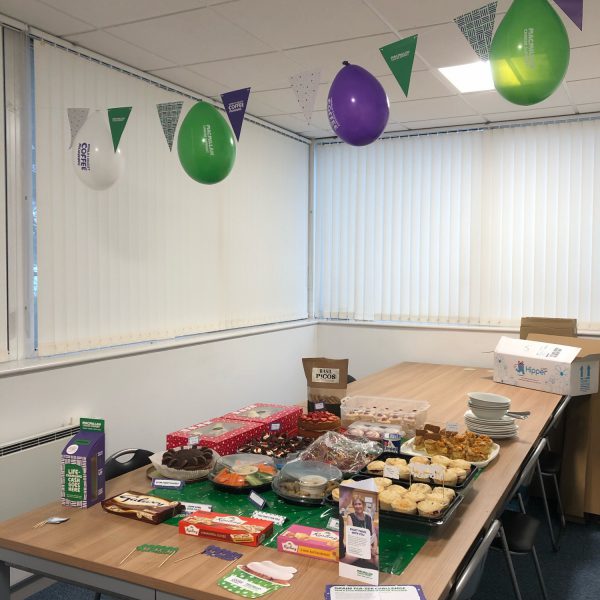
Our Macmillan Coffee Morning...
FEL Group took part in this year's biggest coffee morning in support of Macmillan.

